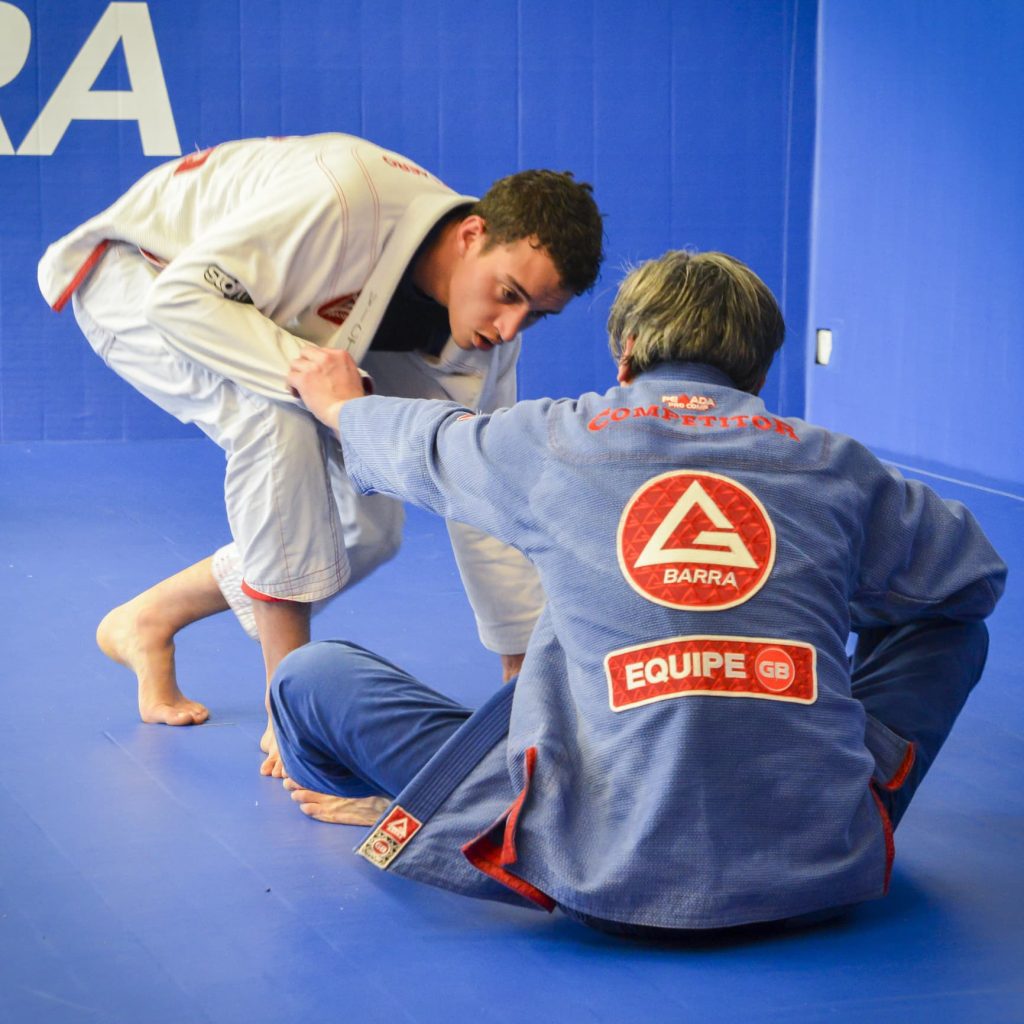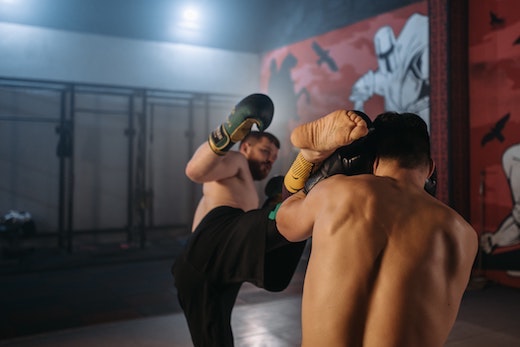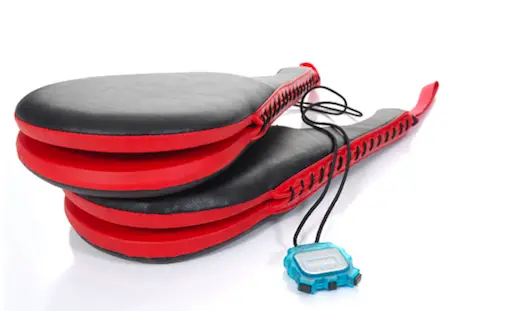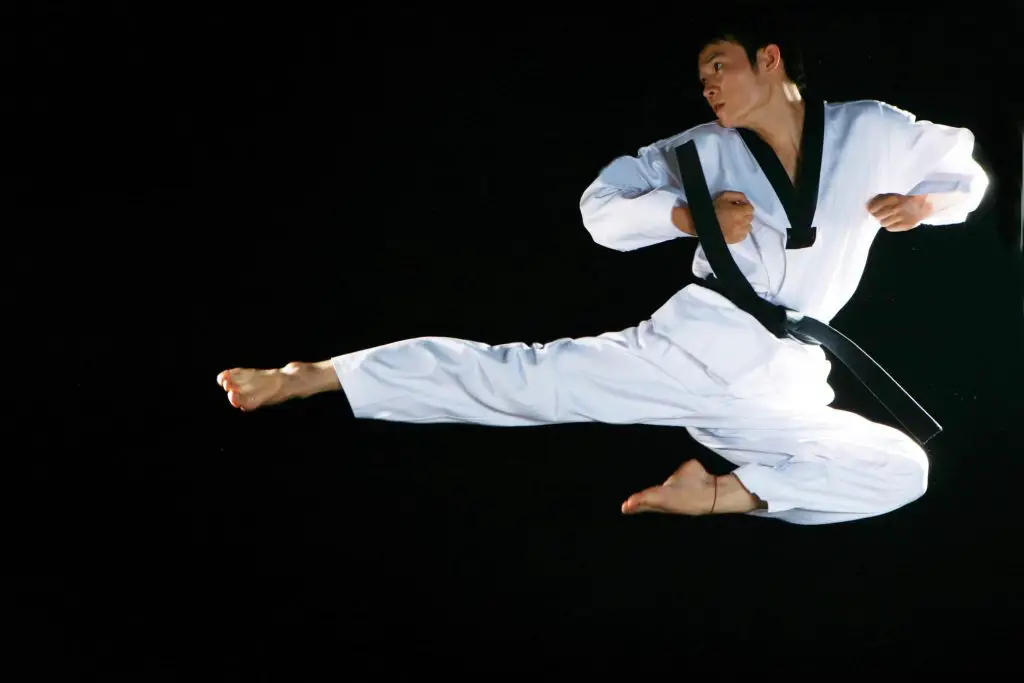- BJJ Has A Lower Injury Rate Than Other Martial Arts, But Knee Injuries Can Still Happen Due To The Rotational Movements Involved.
- Common Knee Injuries In BJJ Include Ligament Tears, Meniscus Tears, And Patella Dislocations Or Subluxations.
- To Protect Your Knees, Warm-Up Before Training, Use Knee Braces Or Kinesiology Tape And Consult With A Medical Expert If You Have Knee Issues.
I’ve had my fair share of knee problems, and I know how vital it is to protect those precious joints.
Let’s DIVE DEEP into whether BJJ is indeed tough on our knees (our pick of top bjj kee pads) and explore potential alternatives.

So, grab your favorite knee brace and let’s get started!
A Knee-sy Overview of Brazilian Jiu Jitsu
Brazilian Jiu-Jitsu (BJJ) is a fantastic grappling combat sport that can keep us mentally and physically challenged.
But What About Our Knees?
It is commonly said that in other martial arts, BJJ has one of the lowest rates of injury. However, knee injuries can still occur.
But fear not, my fellow BJJ enthusiasts! In some cases, it’s possible to train around these PESKY SETBACKS.
Why the focus on knees, though?
BJJ involves plenty of rotational movements and body contact—similar to other sports like MMA, judo, soccer, basketball, and handball. Unfortunately, this makes our knees more susceptible to injuries.
Brazilian jiu-jitsu is a sport that requires handgrip strength, endurance, and strategy—plus, it’s loads of fun!
The Knee-d to Know: Common Knee Injuries

In BJJ, OUR KNEES are constantly subjected to twisting and bending movements, making them susceptible to injury.
In this section, I’ll briefly discuss the common knee injuries in Brazilian Jiu-Jitsu, focusing on three significant aspects: ligament lamentations, meniscus mayhem, and patella problems.
Ligament Lamentations
The knee has four main ligaments that can suffer when practicing BJJ: ACL, PCL, MCL, and LCL.
These injuries are frequently caused by sudden direction changes, which can result in sprains or full-thickness tears. Ask any athletes who have experienced this, it does not sound fun.
Meniscus Mayhem
Our knees also house crescent-shaped cartilage called menisci, which act as shock absorbers. Unfortunately, twisting and turning during BJJ often leads to meniscus tears.
An awkward landing can be a killer for your menisci.
Patella Problems
Another heartbreaking knee issue involves the patella. Dislocations and subluxations can result from a SUDDEN IMPACT or abnormal movement like those aggressive sweeps we all know and love.
Fellow BJJ enthusiasts, I feel your pain!
Keep practicing, but remember to take care of those precious knees!
Rolling the Dice: Risk Factors in BJJ
I’ve noticed that Brazilian Jiu-Jitsu can be PRETTY TOUGH on the knees. It boils down to a few key issues:
Technique Turmoil
When rolling, if your technique isn’t on point, you could put unnecessary strain on your knees.
A good example is LEG LOCKS – if applied improperly, they can wreak havoc on your knees (source).
Rolling Intensity Insanity
If you roll at 100% intensity, there is an increased risk of a knee injury. Try rolling at 50-70% instead. It helps maintain technique and reduces the likelihood of injury (BJJ More).
The Flexibility Factor
My experience suggests that flexibility is a big factor in preventing knee injuries. Incorporating stretching routines can save your knees from the wear and tear of BJJ. Trust me, in the future; you will thank you for it!
Can You Practice Jiu-Jitsu with Bad Knees?
Please consult with your orthopedic doctor. I feel that as long as I can perform basic movements like squatting, bending, and kneeling without discomfort, Jiu-Jitsu is doable (source).
The best part?
Jiu Jitsu movements can be accommodated to suit YOUR bad knees.
I have learned that strengthening my knees through stretches and exercise can reduce the risk of further knee injuries (source).
Plus, wearing a knee brace has been instrumental in my training.
Of course, it’s crucial to remember that every knee condition has quirks. So, it’s vital to CONSULT A MEDICAL EXPERT on whether practicing Jiu Jitsu suits your knee issues.
Will I let bad knees stop me from rolling on the mats?
As Michael Jordan said, “Depends how f***ing bad the headache is!”
I’ll keep adapting my technique and taking care of myself. After all, Jiu-Jitsu is an endlessly adaptable sport!
Ways to Protect Your Knees
I understand that Brazilian Jiu Jitsu puts knees under stress, so let’s dive into some solutions to keep those joints safe and sound.
Warm-Up Wonders
Incorporating a proper warm-up before hitting the mat prepares the muscles and keeps the knees limber. Try lunges or hamstring stretches to get started.
Strength and Stability Savvy
Developing strong muscles around the knees, like the quadriceps and hamstrings, is ESSENTIAL.
Resistance exercises will be your new best friend for knee stability.
Low-impact activities such as cycling, pilates, and tai chi can also contribute to overall leg strength without overstraining the knees.
Win-win!
Taping Tall Tales
Swapping BJJ war stories may include tales of knee-taping.
Some fighters swear by using kinesiology tape to support the knee and reduce pain.
Though it’s not a MAGIC CURE, it can offer some comfort and stability during training.
Remember these tips, and you’ll be grappling like a champ while keeping your knees in tip-top shape!
The Art of Tapping Out: Know When to Surrender
As a seasoned Brazilian Jiu-Jitsu practitioner, I’ve learned that tapping out is pivotal to protecting my knees.
Tapping out occurs when I gracefully surrender to the submission during a match. This could be Brazilian Jiu-Jitsu (BJJ), Judo, Wrestling, or Mixed Martial Arts (MMA).
Now, let me tell you, tapping out is not a sign of weakness. In fact, it shows my awareness of my body and my opponent’s technique.
I make sure to tap at least two or three times – FAST and EARLY – to avoid injury.
Remember, we’re talking about knees here—you know, those delicate joints that support our every move.
I cannot emphasize the importance of following the art of tapping out enough.
First things first: never perform a lame “Brazilian tap..” This sneaky move is frowned upon in BJJ and is a blatant form of cheating.
But trust me; nobody likes a Sneaky Snake on the mat.
So, my fellow grapplers, remember to TAP FAST, TAP EARLY, and Cherish Your Knees. After all, your knees will undoubtedly thank you when you’re sliding smoothly into that victory celebration. 😄


